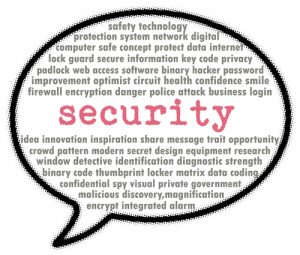These days, there is no end to the number of cyber security risks at play. Whether you are an individual or a large corporation, it’s imperative to protect yourself online. As the threats multiply across the internet, so have the solutions. Whether you are in the business of tech or not, focusing on cyber security is vital. To protect yourself, your family, your business, and your employees, you will need to know about the following cyber security risks and how to protect against them.

Malware
Malware is software that has been programmed to harm a computer and its network. It can release a virus onto the device. It can employ a worm to find specific information. Malware can infect an entire network through a single computer. It can leak private information and compromise certain operations. Whether malware was designed to destroy or steal, you can avoid it by using anti-malware software and backing up your data on the Cloud. It’s more effective when you keep your data off-site and outsource your Cloud storage.
Ransomware
Malware can carry ransomware, but it can also be downloaded from a link or an attachment. Whether it’s through a phishing email or on a shady website, once ransomware is downloaded it holds your device hostage. It moves through the devices on your network and does the same to them. When you are dealing with ransomware, the goal is to extort money from you to get access to your devices and data.
Beyond holding your computers hostage for ransom, they can also find information to blackmail you with. Even if you give them money, there is no guarantee that they will release the devices. Ransomware is diabolical. You should have good anti-ransomware software installed on your computer, but it’s also necessary to avoid clicking unknown links or downloading unknown attachments.
Phishing
Like malware, phishing attacks can contain all kinds of malicious programs and viruses. You can get a virus on your computer from clicking on something or downloading an attachment. You could also download ransomware. On the other hand, a quiet worm can be installed to sift through your information. Phishing can enable hackers to get access to your device and look for valuable business or personal information. If you are innovating, they could see how you are doing it. Phishing is an old-school attack, but it has modernized in several ways.
Identity Theft
It doesn’t matter how the hackers get your information; identity theft has become a huge problem. Even if they just guess your password there are huge risks involved. You should never use the same password for various accounts. If a hacker finds one, they will have access to have everything.
They can open accounts in your name, wire money to themselves, and do all kinds of unsavory things with your information. A few ways to avoid this are to use a password scrambler stored with encryption. That way, nothing about your life will be used to create the password and it will be randomized enough for it to be very difficult for hackers to get into.
Zero Day
When hackers, malware, or another form of cyber attack makes its way to your network, servers, and devices without being detected, it’s known as a zero day. A zero day is particularly frightening because it can be difficult to detect what they did, what they saw, and how you were compromised.
Of course, you should have a professional IT staff to keep track of breaches and respond to them, but these days a lot of people are investing in artificial intelligence (AI) to watch over their network, servers, devices, and data. AI can detect when there has been a breach more effectively and create solutions to risks in the cyber security strategy. AI will help companies and individuals keep themselves safe from cyber-attacks.
There are more risks than the five cyber attacks above, but they are some of the most common. Malware and ransomware attacks have become infamous. They are some of the most effective attacks on large businesses and individuals alike. So, when you are thinking about upgrading your cyber security defense, think about these risks, attacks, and employ these solutions.





